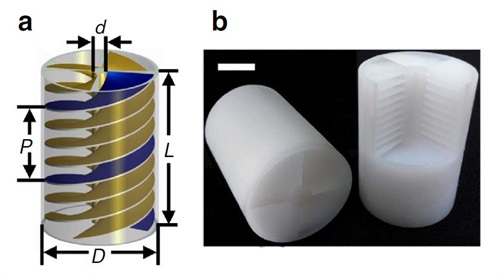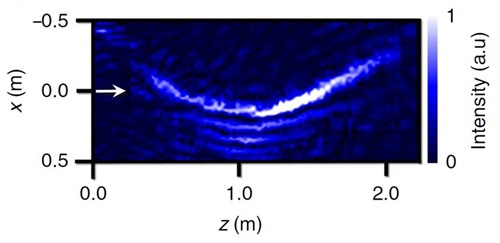Recently, Research Fellow of XIOPM National Key Laboratory for Transient Optics and Photon Technology, through cooperation with Heilongjiang University, Huazhong University of Science & Technology, Hong Kong Polytechnic University and US University of Michigan, etc, designed a helical metamaterial and realized acoustic velocity slowing down and beam phase regulation with the material. The research achievement was published in the Nature Communications on May 20 with XIOPM as the unit of the first author of the co-authors and the title of "Implementation of Dispersion-free Slow Acoustic Wave Propagation and Phase Engineering with Helical-structured Metamaterials".
By designing micro-structure as the basic structural unit, metamaterial can realize the peculiar physical property that natural material does not possess (for example, negative refraction and super-large refraction index, etc), and will have great application prospects in electromagnetic field, optics, acoustics and information and energy, etc. How to effectively slow down wave transmission speed, realize wave phase regulation and enhance interaction between wave and substance has always been a cutting-edge hot topic in electronics, optics and acoustics, etc. Previous methods for slowing down beam were mostly based on material dispersion or structural local resonance, so they were only suitable for very narrow range of band. The helical metamaterial proposed in the paper is based on the rotation of wave surface during transmission to realize ultrahigh equivalent refraction index, so as to greatly slow down beam. The method does not involve material dispersion and structural resonance, so it can work within very wide range of frequency. Meanwhile, by micro-adjusting helicity of basic structure unit, it can easily realize regulation of wave phase within the range of 0-2p. The array formed with the metamaterial has successfully realized generation of self-accelerated diffraction-free beam in experiment.
The Doctor has established the research team consisting of one fixed member, one post-doctor and one doctoral candidate, to mainly carry out relevant researches in light beam control, nm photonics and optical micro-imaging fields, with one project in main research orientation being granted subsidy of the National Nature Science Foundation of China.
Linkage for downloading of the paper:
http://www.nature.com/ncomms/2016/160520/ncomms11731/full/ncomms11731.html


Download: